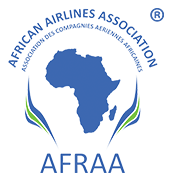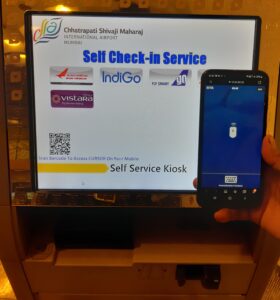SITA, the technology provider for the air transport and borders industry, today released a Positioning Paper detailing its latest generation of smart border solutions to facilitate the implementation of the new European Union Schengen Zone border controls planned for 2022.
SITA’s new TS6 Automated Border Control (ABC) Kiosks have been developed to accommodate future upgrades and changing requirements, such as the use of new biometric capture devices or the introduction of a printer to provide receipts to travelers.
The new EU Entry-Exit System (EES) is designed to ensure robust and consistent checks on travelers along the entirety of Europe’s external borders. SITA’s next-generation solution uses the biometric data captured at its ABC kiosks to expedite processing at the ABC gates, reducing congestion and improving passenger flow while providing high-quality data to governments and border agencies. SITA has extensive experience designing and implementing digitally-enabled 21st Century borders for airports, seaports, and land border crossings. These solutions address the entire border control ecosystem – enabling governments and border agencies to leverage passenger data, conduct risk assessment, and manage traveler identities across the full-spectrum of border control operations.
Jeremy Springall, Vice-President Border Management, SITA said: “The introduction of EES will bring significant benefits but also presents operational challenges for EU member states to achieve smooth and effective border processes. Maximizing the value delivered by the introduction of EES requires an approach that goes beyond the initial acquisition of gates, kiosks, and biometric devices. Member states now have a unique opportunity to positively transform their border operations through the intelligent integration of new and existing border management systems.”
With SITA Border solutions in place, arriving travelers in the Schengen Zone will be able to confirm their registration in the Central EES system at the kiosk, update their travel record with any new travel document or visa details, confirm their biometric data and make declarations specific to their journey. The biometric data can then be used to identify the traveler at the ABC gate – enabling them to proceed directly through the gate by facial recognition alone. This innovative approach is expected to significantly improve processing times at border crossing points for arrivals compared to traditional processing.
Combatting COVID-19 through timely facilitation of travelers
The additional requirement to collect biometric and biographic data for all Third Country Nationals (TCNs) entering the Schengen Zone, will increase time spent at the border crossing point – potentially creating queues and unfavorably impacting upon traveler experiences. While the temporary reduction in traveler numbers relating to COVID-19 has alleviated the burden on travel infrastructure, new social-distancing guidelines will require authorities to avoid bottlenecks at border crossing points to minimize the risk of infection.
SITA’s two-step process tackles this issue by enabling parallel processing of travelers: while face capture and matching begin the moment a traveler enters the gate, the next traveler can already be scanning their travel document in readiness to enter. This solution accelerates the process and provides a walk-through experience that saves on average five seconds in passenger processing time.
Boosting passenger confidence
COVID-19 presents the most significant challenge the travel industry has faced and technology that can support evolving safety regulations and fluxes in passenger volumes will be key to boosting passenger confidence.
Passengers are also demanding faster and more automated journeys. SITA research conducted in January and February 2020, before the COVID-19 pandemic had its full impact on global air travel, examined responses from nearly 7,000 passengers across 27 countries globally, representing 75% of global air traffic. Over a third of passengers (34%) claim that technology to support digital identity management would add the most value to their journeys, superseding more widely discussed technologies like 5G and artificial intelligence.
The report also showed passengers opt to use technology that helps them automate their entire journey and enables a more fluid travel experience. This trend falls into line with the industry’s COVID-19 response, helping to ease congestion and reducing the interaction points between staff and passengers through contactless touchpoints.
Facing facts
SITA can effectively apply the biometric quality standards prescribed by the EU while supporting governments to tailor and adjust their solutions. This approach leans on extensive experience working with transport infrastructure operators to ensure appropriate environments for face image capture.
Significant efforts have also been made to ensure the fine-tuning of face capture and matching algorithms to ensure that the process works for the widest possible range of travelers. This has been proven across several SITA projects to date – where success rates of over 99% have been achieved across a traveler cohort of several tens of thousands. SITA technology today supports border operations in more than 45 countries globally.
Integration with new and existing border management systems
Many government authorities and transport infrastructure operators have introduced ABC equipment to alleviate pressure on border agents and improve the speed of facilitation. While travelers report greater satisfaction when using self-service touchpoints to clear immigration, the liberation of border guards to focus on travelers requiring greater scrutiny enables these highly trained officers to make the best use of their time and skills.
The integration of the border control point with existing government and international systems – such as watchlists, identity databases, national document registers, and visa management databases – is also critical to ensuring that travelers can be processed with the richest possible set of data upon which governments can make decisions.
SITA has extensive experience in the deployment of ABC solutions across both EU and non-EU states with over 5,000 self-service kiosks deployed worldwide. Moreover, SITA’s existing support network – with a presence in over 200 territories – can be leveraged to ensure the ongoing maintenance and servicing of kiosks, providing customer peace of mind.
To find out more download the ‘Strengthening the Common Border’ Positioning Paper here
Source: SITA


